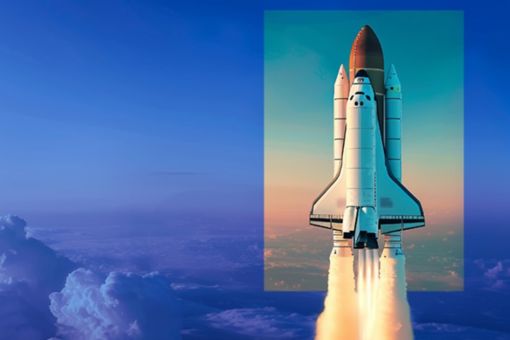Distributed ledger technology (DLT) and digital assets have evolved from a niche innovation to an integral part of the financial world. Formerly used as a basis for cryptocurrencies with limited usage options, DLT and its best-known form, blockchain, are now part of every forward-looking CEO agenda.
Distributed ledger technology makes it possible to store and manage data in a secure, transparent and decentralised way. In contrast to centralised databases, where all data is stored in a single location, DLT allows data and transactions to be distributed across many different nodes in the network. These can be public blockchains (e.g. Ethereum) or authorisation-based (private) networks (e.g. Hyperledger platforms). These structures create trust by cryptographically linking the data blocks. Traditional market players often approach the topic cautiously, but further development continues unabated and harbours enormous opportunities for companies to automate complex processes or through new forms of value creation.
The blockchain makes it possible to store data and transactions in blocks without the need for a centralised authority. Thanks to decentralised consensus mechanisms, blockchain offers a high level of security and protection against forgery. This offers companies a wide range of opportunities to develop new business models and optimise existing processes, for example through smart contracts. These enable self-executing contracts that automatically check and execute conditions, thereby increasing efficiency and trust.
Digital assets are digital representations of real or intangible values that are managed on a DLT platform. These include, for example, real estate, art, raw materials, but also music and usage rights or shares in companies. Tokenisation converts these assets into tradable units. The advantages of the technology are obvious: the assets can be transferred directly between parties without a central intermediary. This reduces transaction costs while increasing liquidity and speed. In addition, tokenisation opens up asset classes that were previously difficult to access for retail investors, for example through fractional ownership of real estate or investments in alternative investments.
Regulation as a success factor for DLT
Regulatory authorities and international and intergovernmental organisations are working on DLT to create regulatory frameworks and standards for digital assets. Regulatory security is the basic prerequisite for acceptance in the markets and promotes the development of DLT ecosystems. The legal framework for digital assets in Germany (KWG, eWpG, ZuFinG) and Europe (DLT Pilot Regime, MiCAR, MiFIDII) continues to evolve. This creates important entry requirements for established institutions.
Decentralised Finance (DeFi)
Not only is the increasing demand for digital assets in the narrower sense changing the market, but also the associated services. Distributed ledger technology has the potential to create more efficient markets and optimise the exchange and management of assets and services from the ground up.
One of the most dynamic and innovative segments here is the topic of "Decentralised Finance" (DeFi). DeFi is an innovative way of organising the provision of financial products that does not rely on central financial intermediaries, but offers users the opportunity to map bank-like services in a decentralised manner.
DLT has disruptive elements along the entire value chain of banks, asset managers and securities depositories. Processes can be streamlined or eliminated entirely through the automation of activities. Value chains and the associated processes and business models should be fundamentally rethought due to the disruptive nature of DLT.
Digital securities can be issued and traded via blockchain networks or other digital platforms. They represent ownership rights or financial interests in an underlying asset, such as shares, bonds or investment funds. Digital securities offer advantages such as increased liquidity, programmable functions and automated compliance. Since 2021, the eWpG has also provided a legal framework for the issuance of digital securities.
Digital money refers to any form of currency or payment system that exists exclusively in electronic or digital form. It is a digital representation of traditional fiat currencies such as the US dollar or the euro. New forms of money made possible by DLT include e-money tokens and stablecoins, bank money tokens (CBMT) and digital central bank money. In addition, a digital euro for private customers is being developed by the ECB (non-DLT). Digital money can be used for various transactions, including online purchases, money transfers and digital payments. It usually relies on secure cryptographic techniques to ensure the integrity and security of transactions.
Tokenised assets are digital representations of real assets such as real estate, works of art, goods or even intellectual property rights. These assets are converted into tokens that can be stored, transferred and traded on a blockchain network. Tokenisation enables fractional ownership, increased liquidity and access to a wider range of investors. Ownership and transaction records are typically stored on the blockchain, providing transparency and security.
Crypto-assets, also known as cryptocurrencies, are digital or virtual currencies that use cryptographic techniques to secure transactions and control the creation of new entities. Bitcoin is the first and most well-known example of a cryptocurrency. Other popular cryptocurrencies include Ethereum, Litecoin and Ripple. Crypto assets can be used for a variety of purposes, such as online transactions, investments and store of value, and they often offer decentralisation, security and privacy features.
We support you with innovative ideas and proven expertise
The financial industry is undergoing a profound transformation – driven by the innovative power of digital infrastructures. With increasing regulatory clarity and new market entrants, investment in digital assets is on the rise. This dynamic poses key strategic questions for European banks, FinTechs, asset managers and crypto custodians.
Our team of experts helps companies to position themselves in the complex landscape of DLT and blockchain environments. As thought leaders, sparring partners and implementation experts, we offer customised solutions that are tailored to the specific needs of each company.
We support you with
- the development of comprehensive regulated digital assets business and operating models,
- founded advice and support for MiCAR notification applications and other DLT-based authorisation procedures (DLT pilot regime, eWpG),
- maßtailored solutions and applications for the digital capital market and
- concrete strategies for minimising risks and exploiting your potential.
Whether you are a traditional financial institution looking to explore new opportunities for digital assets, or a crypto custodian looking to enhance your security arrangements, our team can provide the expertise and advice you need to achieve your goals in this rapidly evolving market.
Get in touch with us – we look forward to the exchange.
Further interesting Insights for you
Publications (partly in German)
Blog Articles (German only)
Further Blogposts
- Der digitale Euro – langsam wird es konkret
- Sieben Thesen zur Zukunft von digitalen Assets und digitalem Geld
- MiCAR umsetzen, Risiken begrenzen: Jetzt kommen FinmadiG und KMAG
- Umsetzung der MiCAR-Regeln: Das Kryptomärkteaufsichtsgesetz kommt
- Das DLT Pilot Regime: Grundlage für eine neue Kapitalmarkt-Infrastruktur?
- Paypal USD: Eine Bestätigung für die Weitsichtigen
Podcasts (in German)
Your contacts
Stay up to date with what matters to you
Gain access to personalized content based on your interests by signing up today
Jens Siebert
Partner, Financial Services
KPMG AG Wirtschaftsprüfungsgesellschaft
Bernd Oppold
Partner, Financial Services
KPMG AG Wirtschaftsprüfungsgesellschaft
Connect with us
- Find office locations kpmg.findOfficeLocations
- kpmg.emailUs
- Social media @ KPMG kpmg.socialMedia
Hot Topics in the financial sector
- Accelerating the Journey to the Cloud
- Data as a production factor in the financial institution of the future
- Incorporating Sustainability in Finance
- IT Compliance Management & Cybersecurity for the Financial Industry
- Mapping out the Future of Finance
- Prioritizing on Customer Needs
- Setting a Course for the Future of Risk
- Operational Excellence











-2:cq5dam.web.510.340)
